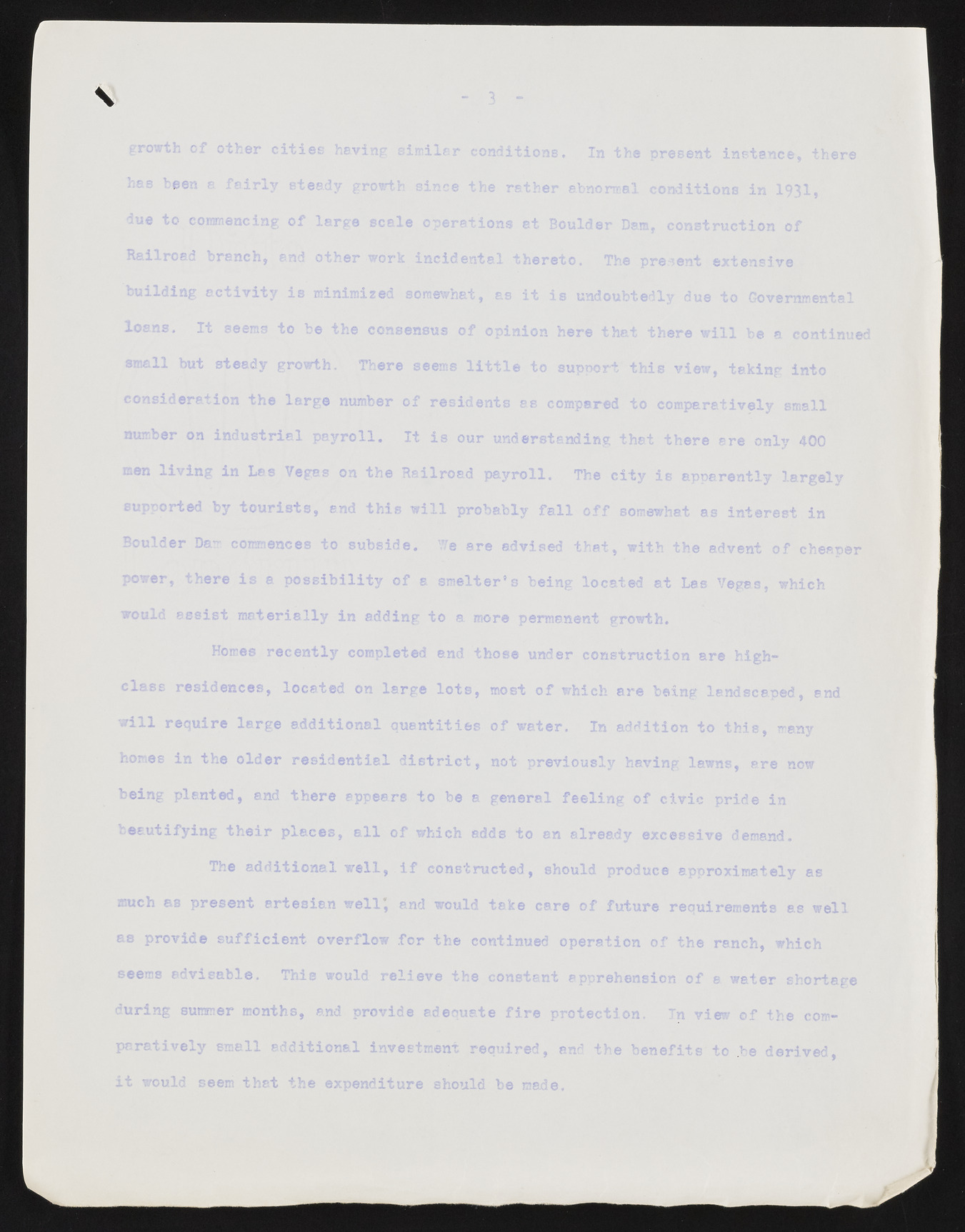Copyright & Fair-use Agreement
UNLV Special Collections provides copies of materials to facilitate private study, scholarship, or research. Material not in the public domain may be used according to fair use of copyrighted materials as defined by copyright law. Please cite us.
Please note that UNLV may not own the copyright to these materials and cannot provide permission to publish or distribute materials when UNLV is not the copyright holder. The user is solely responsible for determining the copyright status of materials and obtaining permission to use material from the copyright holder and for determining whether any permissions relating to any other rights are necessary for the intended use, and for obtaining all required permissions beyond that allowed by fair use.
Read more about our reproduction and use policy.
I agree.Information
Digital ID
Permalink
Details
More Info
Rights
Digital Provenance
Publisher
Transcription
\ growth o f other c it ie s having sim ila r conditions. In the present instance, there has been a f a i r l y steady growth since the rather abnormal conditions in 1931, due to commencing o f large scale operations at Boulder Dam, construction o f Railroad branch, and other work in ciden tal th ereto. The present extensive building a c t iv it y is minimized somewhat, as i t is undoubtedly due to Governmental loans. I t seems to be the consensus o f opinion here that there w i l l be a continued small but steady growth. There seems l i t t l e to support th is view , taking into consideration the la rg e number o f residents as compared to comparatively small number on in d u stria l p a y ro ll. I t i s our understanding that there are only 400 men liv in g in Las Vegas on the Railroad p ayroll. The c it y is apparently la rg e ly supported by to u ris ts , and th is w i l l probably f a l l o f f somewhat as in terest in Boulder Dam commences to subside. We are advised th a t, with the advent o f cheaper power, there i s a p o s s ib ilit y o f a sm elter’ s being located at Las Vegas, which would assist m a terially in adding to a more permanent growth. Homes recen tly completed and those under construction are high-class residences, located on la rg e lo t s , most o f which are being landscaped, and w i l l require large add ition a l qu an tities o f water. In addition to th is , many homes in the old er re s id e n tia l d i s t r i c t , not previously having lawns, are now being planted, and there appears to be a general fe e lin g o f c iv ic pride in beau tifyin g t h e ir places, a l l o f which adds to an already excessive demand. The a d d ition a l w e ll, i f constructed, should produce approximately as much as present artesian w e ll’, and would take care o f future requirements as w ell as provide s u ffic ie n t overflow fo r the continued operation o f the ranch, which seems advisable. This would r e lie v e the constant apprehension o f a water shortage during summer months, and provide adequate f i r e protection. In view o f the comp a ra tively small additional investment required, and the b en efits to .be derived, i t would seem that the expenditure should be made.

